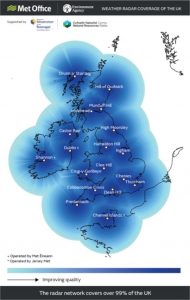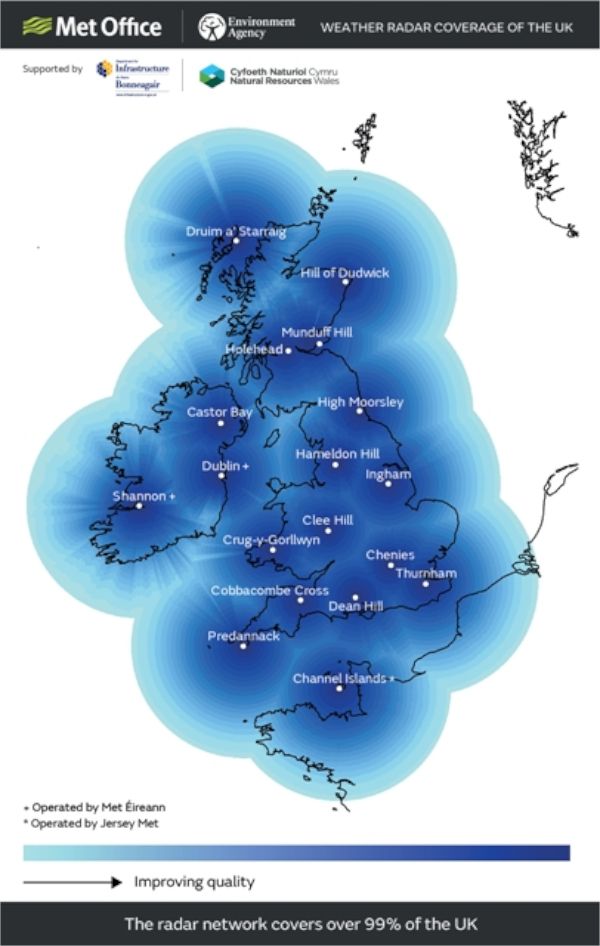This blog describes the work of Masters student Vasiliki Kouroupaki, carried out in collaboration with the UK Met Office.

In numerical weather prediction, nowcast, hindcast and forecast models can be improved through data assimilation. Data assimilation is the technique which combines observations with output from a previous short-range forecast (background) to produce an optimal estimate of the state of the atmosphere (analysis).
Radar reflectivity observations are assimilated by the Met Office in order to provide up-to-date information about rainfall in the initial conditions for UK weather forecasts. In assimilation, observations are assigned weights according to their error statistics. Depending on the kind of observation, there are different factors or processes which can result in errors. In order to have an optimal analysis these errors must be correctly specified. However, due to the fact that the true errors are not known their statistics need to be estimated. In this work, the uncertainties of radar reflectivity observations assimilated into the Met Office UKV model are examined using a diagnostic technique. Data come from the operational UKV model with hourly cycling 4D-VAR or from trial experiments four times per day. The diagnostic is based on combinations of observation-minus- background, observation-minus-analysis and background-minus-analysis differences. The results show that observation error variances are higher for Winter (1 Dec 2017-18 Jan 2018) than for Summer (16 Jul-16 Aug 2018) and that they increase for higher reflectivity values. Further investigations classified the data by beam elevation and by radar ID. These showed that for values of beam elevation between 0.5- 1.0 and 3.0-4.0 degrees the error variance had greater values. Also, error statistics for different radars were positively correlated with the mean reflectivity observed by each radar.
Further investigation of observation error statistics in the assimilation could improve the initial conditions and thereby operational forecasts for convective rainfall events.

